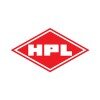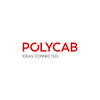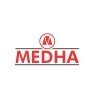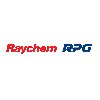Filter interviews by
C&S Electric Design Engineer Interview Questions and Answers
7 Interview questions
NX CAD and CAM software is a comprehensive tool for product design, engineering, and manufacturing processes.
NX CAD offers advanced modeling capabilities, including parametric and direct modeling.
It supports complex assemblies, allowing for efficient management of large projects.
The software integrates seamlessly with CAM for manufacturing, enabling direct toolpath generation from CAD models.
NX provides simulation...
Creating a component drawing in AutoCAD involves defining dimensions, layers, and annotations for clarity and precision.
1. Start by setting up the drawing environment: Choose the appropriate units (e.g., metric or imperial) and set the drawing limits.
2. Use layers to organize different elements of the drawing, such as dimensions, annotations, and the component itself.
3. Begin sketching the component using basic sh...
I have extensive knowledge in 2D and 3D molding and sheet metal design, focusing on applications and manufacturing processes.
2D molding involves creating flat patterns for parts, such as die cuts for packaging.
3D molding allows for complex shapes, like automotive components, using techniques like injection molding.
Sheet metal design includes processes like bending, cutting, and forming to create parts like enclosu...
Programming a VMC involves creating CNC code to control machining operations for precision manufacturing.
Understanding G-code and M-code for machine control.
Setting up the workpiece and tool offsets accurately.
Creating a toolpath using CAD/CAM software, e.g., SolidWorks or Mastercam.
Simulating the machining process to avoid collisions and errors.
Loading the program into the VMC and conducting test runs.
Creating a drawing in AutoCAD involves using various tools to design and draft precise technical drawings.
Start by setting up the drawing units (e.g., inches or millimeters).
Use the Line tool to create basic shapes and outlines.
Employ the Circle and Arc tools for curves and circular features.
Utilize layers to organize different elements of the drawing.
Incorporate dimensions using the Dimension tool for accuracy.
Ad...
Current is the flow of electric charge, while voltage is the potential difference that drives this flow.
Current (I) is measured in Amperes (A) and represents the flow of electric charge.
Voltage (V) is measured in Volts (V) and represents the potential difference between two points.
Example: A battery provides voltage to push current through a circuit.
Current can be thought of as the amount of water flowing through ...
First projection is a front view of an object, while third projection is a side view.
First projection shows the front view of an object, while third projection shows the side view.
First projection is typically labeled as 'F' on engineering drawings, while third projection is labeled as 'T'.
First projection is used to show the overall shape and size of an object, while third projection is used to show the depth and...
C&S Electric Design Engineer Interview Experiences
5 interviews found
I appeared for an interview in Jun 2025, where I was asked the following questions.
- Q1. What is the difference between first angle projection and third angle projection?
- Ans.
First angle projection places the object between the observer and the projection plane, while third angle does the opposite.
In first angle projection, the top view is below the front view.
In third angle projection, the top view is above the front view.
First angle is commonly used in Europe, while third angle is prevalent in the USA.
Example: In first angle, the right side view appears on the left side of the drawing.
Exa...
- Q2. What is involved in programming a Vertical Machining Center (VMC) machine?
- Ans.
Programming a VMC involves creating CNC code to control machining operations for precision manufacturing.
Understanding G-code and M-code for machine control.
Setting up the workpiece and tool offsets accurately.
Creating a toolpath using CAD/CAM software, e.g., SolidWorks or Mastercam.
Simulating the machining process to avoid collisions and errors.
Loading the program into the VMC and conducting test runs.
- Q3. What knowledge do you have about NX CAD and CAM software?
- Ans.
NX CAD and CAM software is a comprehensive tool for product design, engineering, and manufacturing processes.
NX CAD offers advanced modeling capabilities, including parametric and direct modeling.
It supports complex assemblies, allowing for efficient management of large projects.
The software integrates seamlessly with CAM for manufacturing, enabling direct toolpath generation from CAD models.
NX provides simulation tool...
- Q4. What is your knowledge regarding 2D and 3D molding and sheet metal?
- Ans.
I have extensive knowledge in 2D and 3D molding and sheet metal design, focusing on applications and manufacturing processes.
2D molding involves creating flat patterns for parts, such as die cuts for packaging.
3D molding allows for complex shapes, like automotive components, using techniques like injection molding.
Sheet metal design includes processes like bending, cutting, and forming to create parts like enclosures a...
- Q5. What is the process for creating a component drawing in AutoCAD?
- Ans.
Creating a component drawing in AutoCAD involves defining dimensions, layers, and annotations for clarity and precision.
1. Start by setting up the drawing environment: Choose the appropriate units (e.g., metric or imperial) and set the drawing limits.
2. Use layers to organize different elements of the drawing, such as dimensions, annotations, and the component itself.
3. Begin sketching the component using basic shapes ...
I applied via Campus Placement and was interviewed in Feb 2024. There was 1 interview round.
(3 Questions)
- Q1. What is difference between first projection and third projection?
- Ans. The first angle projection schema, the views come in the following sequence- top left, then clockwise, the Right view, Front view, and the Top view. In the third angle projection schema, the top view sits at the top of the front view, and the right view sits on the right side of the front view.
- Q2. Ask about last year project.
- Q3. Tell me about yourself?
Interview Preparation Tips
Skills evaluated in this interview
I appeared for an interview before Jun 2024, where I was asked the following questions.
- Q1. What are the definitions and differences between current and voltage?
- Ans.
Current is the flow of electric charge, while voltage is the potential difference that drives this flow.
Current (I) is measured in Amperes (A) and represents the flow of electric charge.
Voltage (V) is measured in Volts (V) and represents the potential difference between two points.
Example: A battery provides voltage to push current through a circuit.
Current can be thought of as the amount of water flowing through a pip...
- Q2. Draw a drawing in autocad
- Ans.
Creating a drawing in AutoCAD involves using various tools to design and draft precise technical drawings.
Start by setting up the drawing units (e.g., inches or millimeters).
Use the Line tool to create basic shapes and outlines.
Employ the Circle and Arc tools for curves and circular features.
Utilize layers to organize different elements of the drawing.
Incorporate dimensions using the Dimension tool for accuracy.
Add tex...
I applied via Naukri.com and was interviewed in Jan 2022. There were 5 interview rounds.

Questions from general knowledge apti
(1 Question)
- Q1. Technical questions related to work and study
(1 Question)
- Q1. Technical+ Aptitude+software all concluded in this round
(1 Question)
- Q1. Salary discussion, company details etc
Interview Preparation Tips
I applied via Naukri.com and was interviewed in Nov 2020. There were 5 interview rounds.
Interview Questionnaire
2 Questions
- Q1. What exp. U have?
- Ans.
I have extensive experience in product design, CAD modeling, and project management across various engineering projects.
Proficient in CAD software like SolidWorks and AutoCAD, designing components for automotive applications.
Led a team in developing a new product line that increased efficiency by 20%.
Conducted stress analysis and simulations to ensure product reliability and safety.
Collaborated with cross-functional te...
- Q2. I told him about my exp.
Interview Preparation Tips
If u r experienced then it will be from your relevant work and from desired profile for which you want to join the company.
Be geniune while interviewing, be original tell actual thing if u know or dont know .
make some basics brushed up of your core subjects only.
Top trending discussions






Interview questions from similar companies

I applied via Recruitment Consultant and was interviewed before Oct 2020. There were 3 interview rounds.
Interview Questionnaire
2 Questions
- Q1. First angle projection
- Q2. Geometric dimensions and tolerence
Interview Preparation Tips

I applied via Company Website and was interviewed in Feb 2024. There was 1 interview round.
(2 Questions)
- Q1. Technical and HR related questions please 🙏🥺
- Q2. Technical and HR related questions please

I applied via Recruitment Consulltant and was interviewed in Apr 2023. There were 3 interview rounds.

(5 Questions)
- Q1. Plastic defects?
- Q2. What is molding?
- Q3. Plastic prevention?
- Q4. How to devloped plastic parts? what method are used?
- Ans.
Plastic parts are developed using methods like injection molding, blow molding, and thermoforming.
Injection molding is a common method where molten plastic is injected into a mold.
Blow molding is used for hollow parts like bottles, where plastic is blown into a mold.
Thermoforming involves heating a plastic sheet and shaping it over a mold.
Other methods include rotational molding, extrusion, and compression molding.
- Q5. What is shrinkage in plastic?
(5 Questions)
- Q1. What is work of npd in industry?
- Ans.
NPD in industry refers to New Product Development, which involves the process of designing, creating, and bringing new products to market.
NPD involves identifying market opportunities and customer needs
It includes concept development, design, prototyping, testing, and commercialization
NPD teams often collaborate with various departments such as marketing, engineering, and manufacturing
Successful NPD can lead to increas...
- Q2. How to calculate costing of complete products?
- Q3. What is gate & runner in molding? &
- Ans.
Gate & runner in molding are channels through which molten material is injected into the mold cavity.
Gate is the opening through which molten material enters the mold cavity
Runner is the channel that connects the gate to the sprue or main injection point
Proper design of gates and runners is crucial for ensuring even distribution of material and preventing defects
Examples: Submarine gate, edge gate, hot runner system
- Q4. What is the purpose of gate & runner in molding?
- Ans.
The purpose of gate & runner in molding is to control the flow of molten material into the mold cavity.
Gate controls the flow of molten material into the mold cavity
Runner distributes the molten material throughout the mold
They help in achieving proper filling of the mold and reducing defects like air pockets or incomplete filling
Different types of gates and runners are used based on the molding process and material be...
- Q5. Cad test: NX Software version 12
Interview Preparation Tips
- New Product Development
- Plastic Molding
- Plastic products
- UG NX

Design Engineer Interview Questions & Answers
Motherson Sumi Wiringposted on 14 Apr 2024
I applied via Campus Placement and was interviewed before Apr 2023. There were 3 interview rounds.
Technical questions around 30 questions.
(2 Questions)
- Q1. Interview with Manager.
- Q2. Catia Software related questions
(1 Question)
- Q1. Basic questions regarding job and work life.
Interview Preparation Tips
If you are coming for design engineer , prepare the material science subject well.

(1 Question)
- Q1. Moment and shear force diagram
- Ans.
Moment and shear force diagrams are graphical representations of the internal forces acting on a structural element.
Moment diagram shows the variation of bending moment along the length of the beam.
Shear force diagram shows the variation of shear force along the length of the beam.
Both diagrams are essential for designing and analyzing structures.
They help in determining the maximum bending moment and shear force that ...
Interview Preparation Tips
C&S Electric Interview FAQs
Some of the top questions asked at the C&S Electric Design Engineer interview -
Tell us how to improve this page.
C&S Electric Interviews By Designations
- C&S Electric Design Engineer Interview Questions
- C&S Electric Production Engineer Interview Questions
- C&S Electric Assistant Manager Interview Questions
- C&S Electric Engineer Interview Questions
- C&S Electric Quality Engineer Interview Questions
- C&S Electric Area Sales Manager Interview Questions
- C&S Electric Assistant Sales Manager Interview Questions
- C&S Electric Senior Engineer Interview Questions
- Show more
Interview Questions for Popular Designations
Overall Interview Experience Rating
based on 4 interview experiences
Difficulty level
Duration
Interview Questions from Similar Companies
C&S Electric Design Engineer Reviews and Ratings
based on 21 reviews
Rating in categories
|
Assistant Manager
242
salaries
| ₹5.4 L/yr - ₹12.5 L/yr |
|
Senior Engineer
166
salaries
| ₹3.8 L/yr - ₹8.3 L/yr |
|
Engineer
108
salaries
| ₹2 L/yr - ₹5.8 L/yr |
|
Deputy Manager
79
salaries
| ₹8 L/yr - ₹13.5 L/yr |
|
Design Engineer
74
salaries
| ₹2.5 L/yr - ₹6 L/yr |

Havells

BHEL

Polycab Wires

Medha Servo Drives
- Home >
- Interviews >
- C&S Electric Interview Questions













